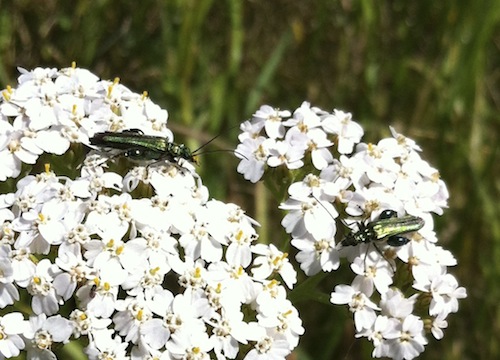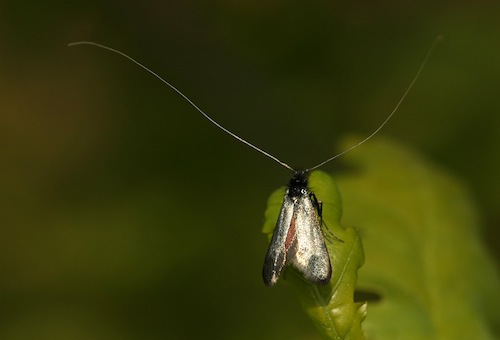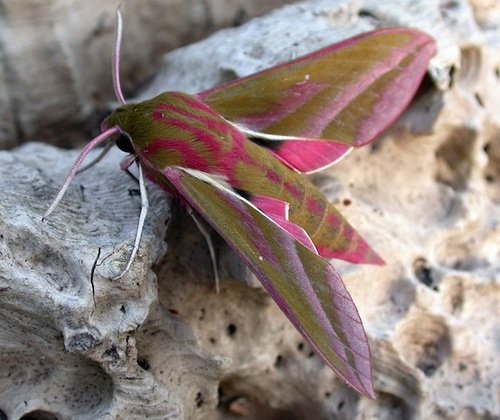I guess I should post this before the end of January. Not a lot of outstanding sightings to report, though.
Best Plant
I was quite tickled to see some Marsh Mallow plants down in Kent. Because, yes, they are the original stuff that marshmallows were made from.
Best Insect

This Poplar Hawkmoth was a pleasing find, and my most unexpected sighting was probably a Marbled White just across the road — are they breeding somewhere nearby? was it lost? — but insect of the year might as well be Swollen-thighed Beetle, Oedemera nobilis:

Because it’s a fun-looking thing, because it has a great name, and because I posted a picture of it on Twitter and the Natural History Museum popped up to tell me what it was. I took that picture when I was out birding, although I later found more of them in the garden, so its clearly a common enough critter. Fun though.
Best Reptile
I went on a twitch to see the Baillon’s Crake which was at Rainham Marshes for a few days. I didn’t see the crake, but while I sat for about three hours in a packed hide staring at the fringes of the water, I did at least see a grass snake. Which was a nice treat.
Best Mammal
There are various places I regularly go which supposedly have water voles, but you hardly ever actually see them; or if you do it’s just a brown nose swimming across a channel from one reedbed to another. But on the same abortive crake twitch, I did find a couple of voles, sitting calm as you like just about eight feet from the path, chewing away at some iris leaves. In fact if I hadn’t stopped to watch them for a while, I might conceivably have seen the crake, which showed not long before I got there… but it was still nice to see the voles.
Best Invertebrate (other), Best Fish, Best Amphibian, Best Ecosystem
I got nothin’.













